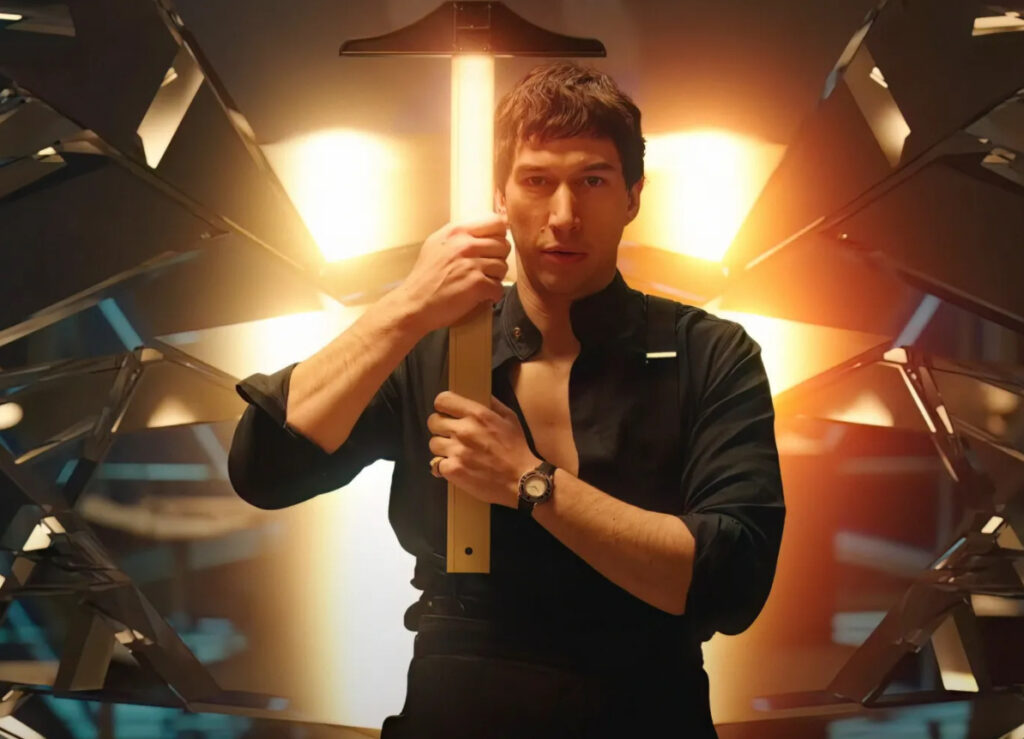
A cinematic architect rewires his utopia—this time, on paper
A city, like a story, is a perpetual construction site—its foundations inherited, its skyline speculative. So too is Megalopolis, Francis Ford Coppola’s sprawling 2024 film, a structure of impossible ambition: part Roman epic, part urban prophecy, and part spiritual treatise. But as with any great architectural work, Megalopolis has not stopped at its first blueprint. It now grows sideways—not in sequel, but in siblinghood—through a newly announced graphic novel adaptation, written by Chris Ryall, illustrated by Jacob Phillips, and published by Abrams ComicArts.
Coppola, never content to be bound by medium or expectation, sees this new expression not as a reiteration but as a parallel skyline. “Art can never be constrained,” he said. “I hoped the graphic novel would take its own flight, with its own artists and writer…a sibling of the film, rather than just an echo.” With that, he opens the gates of Megalopolis once more—not for repetition, but for reinterpretation.
Coppola’s Eternal Project: The Genesis of Megalopolis
To understand the magnitude of this graphic novel, one must first grasp the weight of Megalopolis the film—not just its plot, but its myth.
Francis Ford Coppola had dreamed of Megalopolis since the early 1980s. A utopian vision of a reimagined New York, rooted in Roman political allegory and speculative architecture, the project was long delayed by logistics, ambition, and its creator’s refusal to compromise. Finally released in 2024 as an independently funded epic, Megalopolis was a visually extravagant meditation on civilization’s collapse and the stubborn hope of rebuilding.
The film starred Adam Driver as Caesar Catalina, an architect-philosopher caught in a battle between visionary idealism and societal decay. With references to Coriolanus, Calvino’s Invisible Cities, and Coppola’s own Apocalypse Now, it was less a narrative than a civic riddle—praised and panned in equal measure, but never ignored.
The announcement of the graphic novel, then, is not supplemental—it is second breath. A reimagining in a new visual dialect.
Chris Ryall and the Literary Mutation
If Coppola is the visionary, then Chris Ryall is the alchemist. Known for adapting the dark fictions of Stephen King, Clive Barker, and Harlan Ellison into comic form, Ryall brings a literary sensibility fused with graphic momentum.
His adaptations are not transcriptions. They’re mutations—narrative DNA rewritten to suit panels and gutters, silence and sequence. Ryall understands that the page does not compete with the screen—it reveals what film often cannot: internal monologue, symbolic density, and narrative multiplicity.
Coppola has given him full license not to echo, but to diverge. This is not Megalopolis: The Movie, The Comic. It is Megalopolis: The Idea, Reimagined.
Jacob Phillips: Drawing a New Metropolis
Illustrating this vision is Jacob Phillips, best known for his expressive work on That Texas Blood and Reckless with Ed Brubaker. Phillips paints with shadow, memory, and moral ambiguity—unique tools for a story as ethically layered and architecturally complex as Megalopolis.
Phillips’ task is enormous: to render a city that does not exist, yet feels inevitable. Rome and Manhattan collapse into each other; brutalist towers rise beside domes; street prophets debate senators. He must map a future as if it were myth. Through his pen, Megalopolis becomes a diagram of broken dreams and radiant failures.
Expect buildings to bleed. Expect pages that crack like stone. Expect grandeur not as spectacle, but as lament.
From Frame to Panel: A Shift in Language
Cinema is a river; comics are an atlas. Coppola’s film sweeps with operatic rhythm, while the graphic novel can freeze time, dissect meaning, and overlay metaphor in ways the screen resists.
In film, Catalina delivers his soliloquy beneath a collapsing dome. In comics, his monologue may curl into the architecture itself, printed as etchings on marble pillars. Where the camera pans, the panel constructs. The adaptation may:
- Reframe characters’ psychology through expressionist abstraction
- Embed political themes in page layouts (columns as senate, gutters as chaos)
- Visually contrast utopia vs. dystopia within a single spread
The graphic novel format invites Megalopolis not just to be retold, but re-architected.
The Graphic Novel as Parallel Artifact
This new Megalopolis is not just a tie-in. It’s a counter-archive, joining a rare lineage of literary-graphic hybrids such as:
- Darren Aronofsky’s The Fountain, which gained fuller clarity in graphic form
- Alejandro Jodorowsky’s The Incal, an architectural odyssey that later informed cinema
- Quentin Tarantino’s own Once Upon a Time in Hollywood novel, now spawning a Fincher-led sequel
In each case, narrative extended outward, not onward. Coppola’s graphic novel will exist not to support the film, but to challenge it. Different structure. Different truths. The same dream refracted.
What Megalopolis Means—Now
At its heart, Megalopolis has always been a question: can civilization be saved by design?
The film answered ambivalently. The novel may offer a different code.
In 2024, Megalopolis the movie resonated in a world of collapsing infrastructure, AI-fueled ethics, and renewed philosophical hunger. But the graphic novel arrives in 2025—a year further into global contradiction, where architecture is digital and cities are ghosted by pandemics, protests, and virtual displacement.
Coppola’s statement to The Hollywood Reporter made it clear: this is not an illustrated screenplay. It’s an artistic revolt against singular interpretation. Ryall and Phillips aren’t adapting—they’re building a second city atop the ruins of the first.
The City as Mirror, the Page as Echo Chamber
Reading Megalopolis in graphic form will feel different than watching it—by design. The reader becomes both architect and citizen. One navigates the skyline as much as the subplot. A graphic novel offers time loops, visual rhymes, and marginalia—a chance to walk through ideas instead of just observing them.
Expect experimental formats:
- Sideways spreads mimicking blueprints
- Collage-style annotations as marginalia
- Flashbacks rendered in architectural draftsmanship
- Dialogue flowing across topographic street maps
Coppola’s team has chosen collaborators who understand that narrative form must match philosophical function.
A Utopian Gesture
There’s something undeniably utopian about Coppola’s insistence on a graphic novel. In an industry obsessed with intellectual property and rigid transmedia empires, he chooses the least commercial and most poetic route: a second voice in a second medium, free to contradict the first.
It’s not brand management. It’s aesthetic generosity.
It’s not canonization. It’s open-source mythology.
He doesn’t need to do this. That’s why it matters.
Impression
Coppola, now in his mid-80s, refuses to stop dreaming. Megalopolis is his Sistine Chapel—a final baroque burst before dusk. Yet even as the film reaches audiences, he opens a new door, inviting others in to build beside him.
In doing so, he leaves us not with a single message, but a method:
- Don’t end with your final cut.
- Invite interpretation.
- Let the city be drawn again.
The Megalopolis graphic novel is due out soon from Abrams ComicArts. But in spirit, it’s already begun—in every unfinished thought, in every skyline glimpsed in rain, in every reader ready to redraw what they’ve seen.
No comments yet.








